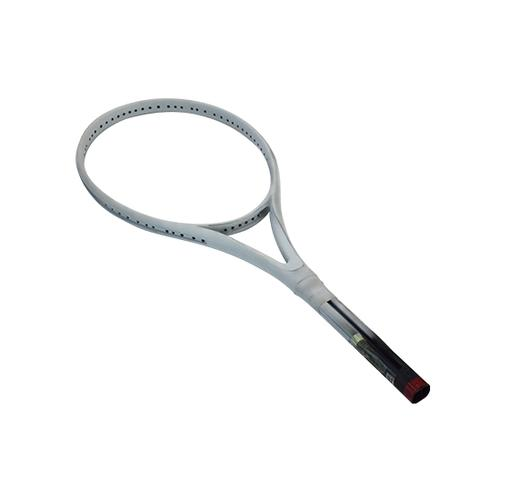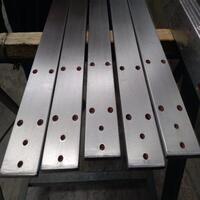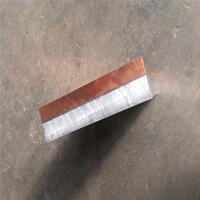1. Introduction
When you hear ‘metal clad,’ you might picture a sleek steel-clad house or a rugged metal shed—but the term spans far beyond architecture. From electrical wiring to high-performance alloy plates, metal clad (or metalclad) refers to any material system where one metal is bonded to another for enhanced functionality. Whether it’s a corten steel facade aging gracefully or aluminum clad stainless steel resisting corrosion in a chemical plant, the combinations are endless—and each serves a unique purpose.

In this deep dive, we’ll compare seven major categories of metal clad systems, unpack their pros and cons, and clarify terms like ‘clad metal meaning’ versus ‘metal clad meaning.’ Spoiler: they’re often used interchangeably, but context matters.
2. Architectural Metal Cladding: Beauty Meets Durability
Metal clad walls and roofs dominate modern design thanks to their longevity and visual impact. Popular options include:
- Corten steel siding: Known for its rust-like patina, this self-protecting steel requires no painting. Corten siding cost runs higher than standard steel but pays off in low maintenance.
- Zinc facade and zinc clad roof: Elegant, sustainable, and naturally corrosion-resistant. A zinc clad dormer adds architectural flair without frequent upkeep.
- Copper siding and standing seam siding: Copper develops a green patina over time; standing seam systems like Colorbond or PAC Clad offer clean lines and weather-tight performance.
Vertical standing seam metal siding and exterior corrugated metal siding are also trending for metal clad houses seeking industrial-chic aesthetics. Meanwhile, PAC Clad coping and column covers provide seamless transitions on commercial builds.
3. Clad Steel and Alloy Plates: Industrial Powerhouses
In heavy industry, ‘clad metals‘ often mean a carbon steel base bonded to a corrosion-resistant layer like stainless steel or nickel alloy. This hybrid—called clad steel—delivers strength plus chemical resistance at a fraction of solid-alloy cost.
Common configurations include aluminum clad steel, stainless clad aluminum, and titanium clad plates. These are used in pressure vessels, heat exchangers, and boiler plate steel applications.
Standards like ASTM A387 govern clad plate quality. You’ll also find specialty plates like 316 stainless steel plate, Inconel 625 overlay, and chrome carbide overlay for extreme wear environments.

For lighter uses, aluminum diamond tread plate or stainless steel checker plate offer slip resistance and durability in walkways or transport.
4. Metal Clad Electrical Wiring: Safety in a Sheath
Metal clad electrical wire (often called MC cable) features insulated conductors wrapped in an interlocked metal armor—typically aluminum or steel. It’s widely used in commercial buildings, including in Pennsylvania, where codes permit its surface-mounted installation.
Variants include aluminum clad steel wire, copper-clad (CU clad) wire, and aluminum clad wire for specific conductivity or weight needs.
Unlike non-metallic cables, MC cable provides superior physical protection and doesn’t always require conduit. However, proper grounding and box connections are critical.
5. Metal Clad Insulation and Piping
Aluminum clad pipe insulation combines thermal insulation with a reflective, protective metal jacket. This system prevents heat loss in HVAC or industrial piping while resisting moisture and UV damage.
The aluminum clad sheet or aluminium clad sheet acts as a vapor barrier and mechanical shield. It’s common in refineries, power plants, and even residential ductwork.
Note: This is different from metal clad insulation used in building envelopes, which may integrate rigid foam with metal skins for walls or roofs.

6. Specialty Clad Metals: Aerospace, Marine, and More
High-performance sectors rely on advanced clad metals. Examples include 2024-T3 clad aluminum for aircraft skins (alclad), 7075-T6 clad for strength-to-weight ratio, and cupro nickel clad for marine condensers.
Nickel-brass clad copper and copper-nickel clad offer antimicrobial and anti-fouling properties. Inconel weld overlays protect turbine blades, while electroless nickel or nickel sulfamate plating enhances wear resistance.
Even electroplating plays a role—chromium electroplating creates hard, shiny surfaces on brass plates or steel base plates, while gold coating is used in electronics.
7. Cost, Availability, and Practical Considerations
Steel plate price varies widely by thickness—1/8 inch steel plate is economical for sheds, while thick steel plate (e.g., 1/4 or 3/16) suits structural bases. Corten steel plate commands a premium but eliminates painting costs.
For DIYers or contractors, ‘steel plate near me’ or ‘aluminum sheet for sale’ searches often lead to local metal suppliers stocking 6061-T6 aluminum plate, 5052 aluminum plate, or stainless steel diamond plate.
Remember: not all ‘metal clad’ is equal. A metal clad shed uses basic corrugated steel, while a steel clad building might integrate PAC Clad HWP panels for fire resistance and aesthetics.
8. Conclusion
Metal clad isn’t one thing—it’s a universe of engineered solutions. Whether you’re choosing a corten steel facade for its raw beauty, specifying aluminum clad stainless steel for a reactor, or running metal clad wire through a commercial wall, understanding the ‘metal clad type’ and ‘clad metal meaning’ behind each option is key. With the right match, you get performance, longevity, and style—all wrapped in metal.
Our Website founded on October 17, 2012, is a high-tech enterprise committed to the research and development, production, processing, sales and technical services of ceramic relative materials such as 7. Our products includes but not limited to Boron Carbide Ceramic Products, Boron Nitride Ceramic Products, Silicon Carbide Ceramic Products, Silicon Nitride Ceramic Products, Zirconium Dioxide Ceramic Products, etc. If you are interested, please feel free to contact us.
